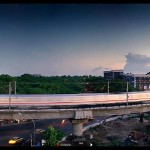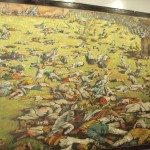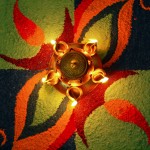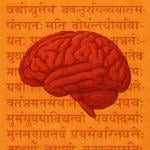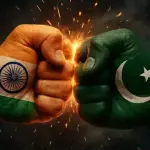In Srimad Bhagwata there is a story where a King takes his daughter to the “abode” or “plane” of Brahma – the creator so that He could help with the search for her husband. They wait for Brahma for a few moments and when he talks to them he says “King when you go back to Earth everything would have changed. None that you knew would be existing anymore. While you have been here a few moments, several thousand years have passed by back there on Earth!”
Is this because the “plane or abode” of the creator was only to be inhabited at a higher speed – much higher than the speed of light? I was reading “The Complete Illustrated Book of Yoga“- where this incident is mentioned. And the suggestion that the author makes is that much as the Vedic scriptures are replete with the “Voyages” to Moon or Sun or various planets and inter-galaxy imagination – while other civilizations elsewhere on this planets did not even know if Earth went around Sun or the vice versa! – is it possible that “Mind” could have been a vehicle for transportation. Often at speeds many times that of light? The speeds and vibrational energy of a “place” could be achievable by sheer application of mind.
So much for the “way” to achieve that speed but it is beyond any doubt that age of creation – as the Vedic Rishis surmised was in millions of years. No chance of any apocalypse anytime soon, sorry guys! This as was mentioned in my earlier post may been true and something which modern science may be turning towards anyways!
Given the above line of thought, is it possible that Srimad Bhagwata was actually referring to a phenomenon that Einstein later came to in his Theory of Relativity and the effects of travel at or over the speed of light (Twin Paradox)?! Whatever be the truth, at least those people were thinking “beyond” what most scientists could not even comprehend just a decade ago!!
Here is an explanation of the Vedic Time Cycles:
According to Hindu mythology, the universe is cyclically created and destroyed. The life span of Brahma, the creator, is 120 divine years (Mahakalpamu). Everyday, Brahma creates 14 Manus one after the other, who in turn create and regulate the world. Thus, there are fourteen generations of Manu in one day (Kalpamu) of Brahma. Each Manu’s life (Manvantaramu) consists of 71 quartets of eras. Each quartet is composed of four eras: Krita, Treta, Dvapara and Kali. The span of Krita era is 1,728,000 human years, Treta era is 1,296,000 human years, Dvapara era is 864,000 human years and Kali era is 432,000 human years. When Manu perishes at the end of his life, Brahma creates the next Manu and the cycle continues until all fourteen Manus and the Universe perish by the end of the day. When night falls, Brahma goes to sleep for a period of time equal to fourteen lives of Manus. The next morning, he begins the creation with first Manu again. The cycle goes on for 120 divine years at the end of which Brahma himself perishes and is regenerated.
The present period is the Kaliyuga or last era of the seventh Manu’s life. This Kaliyuga began 5,101 years ago (in 3101 BC), at the end of the Dvapara era that was marked by the death of lord Krishna, the mortal incarnation of Vishnu. The beginning of the new Yugamu (era) is known as “Yugadi/Ugadi“, and is celebrated every year on the first day (Paadyami) of the first month (Chaitramu) of the 12-month annual cycle.
Here is the breakdown of the various elements of timeon a larger scale and the explanations:
-
- One cycle of the above four yugas is one mahayuga (4.32 million solar years)
- A manvantara consists of 71 mahayugas (306,720,000 solar years)
- After each manvantara follows one Sandhi Kala of the same duration as a Krita Yuga (1,728,000 = 4x solar years). (It is said that during a Sandhi Kala, the entire earth is submerged in water.)
- A kalpa consists of a period of 1,728,000 solar years called Adi Sandhi, followed by 14 manvantaras and Sandhi Kalas.
- A day of Brahma equals
(14 times 71 mahayugas) + (15 times 4x solar years)
= 994 mahayugas + (60 x solar years)
= 994 mahayugas + (6 times 10 x ) solar years
= 994 mahayugas + 6 mahayugas
= 1000 mahayugas
as is confirmed by the Gita statement “sahasra-yuga paryantam ahar-yad brahmano viduH”, meaning, a day of brahma is of 1000 (maha-)yugas.
Thus a day of Brahma, kalpa, is of duration: 4.32 billion solar years.
Two kalpas constitute a day and night of Brahma; the life cycle of Brahma is one hundred years of Brahma, or 311 trillion years. We are currently in the 51st year of the present Brahma and so about 155 trillion years have elapsed since He took over as Brahma.
The current Kali Yuga (Iron Age) began at midnight 17 February / 18 February in 3102 BC in the proleptic Julian calendar.


